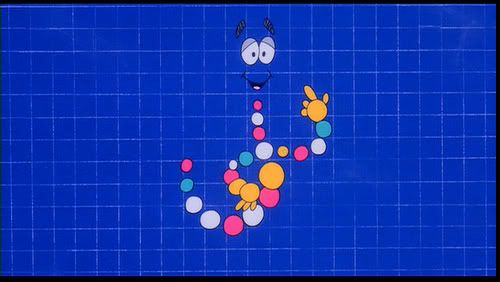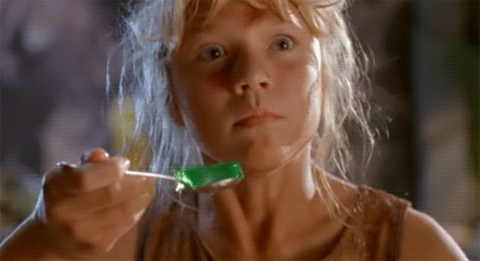Russians Find 10,000-Year-Old Liquid Mammoth Blood, Plan Cloning
by steve casimiro on May 30, 2013

Scientists working on an island in Siberia have announced they found a frozen woolly mammoth carcass estimated to be at least 10,000 years old and, more shockingly, liquid mammoth blood. The finding seems to defy reason, because conditions in the Lyakhovsky Islands off the northern coast of Siberia were quite cold — in the low teens Fahrenheit. But when one of the researchers poked at the carcass with an ice axe, blood squirted out.
“It can be assumed that the blood of mammoths had some cryo-protective properties,” said Semyon Grigoriev, chairman of the university’s Museum of Mammoths and head of the expedition. “The blood is very dark, it was found in ice cavities below the belly and when we broke these cavities with a pick, the blood came running out.”

The Russians are calling the female, who was 50 to 60 years old when she died, the best preserved mammoth specimen in the history of paleontology. Their theory is that she fell into water, died, and was protected when it froze.
“The upper torso and two legs, which were in the soil, were gnawed by prehistoric and modern predators and almost did not survive, Grogoriev said.
The mammoth remains, which weigh about a ton, were removed by snowmobile and stored in a refrigerated building. The team had considered a helicopter, but were worried the carcass would defrost in travel.
Next up: an attempt to bring mammoths back to life using the blood. In 2012, the Russians gave the cloning rights to South Korean stem cell scientist Hwang Woo-suk, whose private bioengineering laboratory confirmed it will extract DNA from the mammoth or its blood, then implant eggs in a living elephant to carry the mammoth to term.

Is it possible? Brian Dunning of the website Skeptoid writes, “Yes, it’s theoretically possible, but it’s a really difficult problem. Getting DNA of high enough quality is only a part of the solution, even though it receives the most attention. When we discover a new frozen mammoth corpse, there’s always excitement and speculation about recovering its DNA. And we have plenty of it, but that’s just gets us across the starting line. The DNA has to be nearly perfect, and then molecular biologists must manually create the 50 to 60 different chromosomes that elephants have. That’s a huge project. Once you have a cell nucleus containing all the chromosomes, you can then replace the contents of the nucleus of a living elephant embryo, but you’ll probably have to do this about 100 times before one will survive.”
by steve casimiro on May 30, 2013

Scientists working on an island in Siberia have announced they found a frozen woolly mammoth carcass estimated to be at least 10,000 years old and, more shockingly, liquid mammoth blood. The finding seems to defy reason, because conditions in the Lyakhovsky Islands off the northern coast of Siberia were quite cold — in the low teens Fahrenheit. But when one of the researchers poked at the carcass with an ice axe, blood squirted out.
“It can be assumed that the blood of mammoths had some cryo-protective properties,” said Semyon Grigoriev, chairman of the university’s Museum of Mammoths and head of the expedition. “The blood is very dark, it was found in ice cavities below the belly and when we broke these cavities with a pick, the blood came running out.”

The Russians are calling the female, who was 50 to 60 years old when she died, the best preserved mammoth specimen in the history of paleontology. Their theory is that she fell into water, died, and was protected when it froze.
“The upper torso and two legs, which were in the soil, were gnawed by prehistoric and modern predators and almost did not survive, Grogoriev said.
The mammoth remains, which weigh about a ton, were removed by snowmobile and stored in a refrigerated building. The team had considered a helicopter, but were worried the carcass would defrost in travel.
Next up: an attempt to bring mammoths back to life using the blood. In 2012, the Russians gave the cloning rights to South Korean stem cell scientist Hwang Woo-suk, whose private bioengineering laboratory confirmed it will extract DNA from the mammoth or its blood, then implant eggs in a living elephant to carry the mammoth to term.

Is it possible? Brian Dunning of the website Skeptoid writes, “Yes, it’s theoretically possible, but it’s a really difficult problem. Getting DNA of high enough quality is only a part of the solution, even though it receives the most attention. When we discover a new frozen mammoth corpse, there’s always excitement and speculation about recovering its DNA. And we have plenty of it, but that’s just gets us across the starting line. The DNA has to be nearly perfect, and then molecular biologists must manually create the 50 to 60 different chromosomes that elephants have. That’s a huge project. Once you have a cell nucleus containing all the chromosomes, you can then replace the contents of the nucleus of a living elephant embryo, but you’ll probably have to do this about 100 times before one will survive.”






Comment